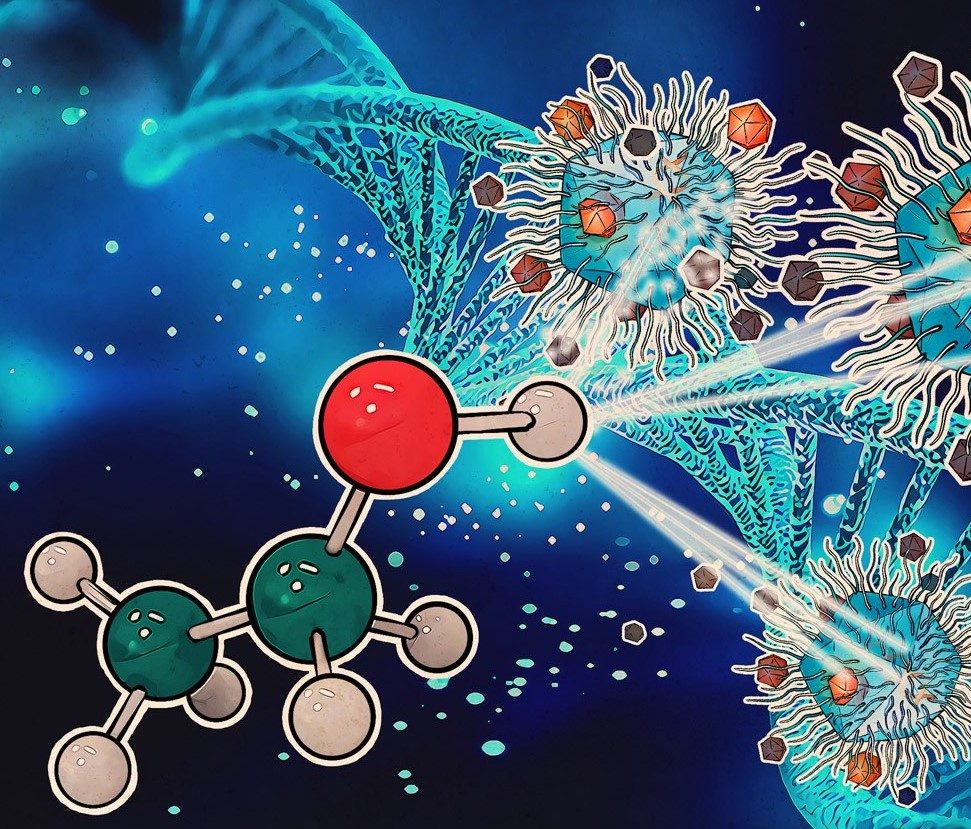Viruses, mutations, strains–these three words are on everyone’s lips today. The coronavirus pandemic, which has swept virtually the entire planet, has made us wonder where the life-changing diseases come from.
In the twenty-two years of the 21st century alone, we have experienced five epidemics that have posed a major challenge to world medicine. Each of them is caused by viruses, but what is surprising is that after a certain period of time virions (virus particles) return, but in a slightly altered structural form. Thus, in 2002-2003, 27 countries of the world faced an epidemic of SARS, from which more than 800 patients died. And that was just the beginning, because humanity was waiting for the next one:
- Swine flu A/H1N1 in 2009-2010, with nearly 19,000 deaths;
- H5N1 and H7N9 avian influenza 2003-2017 – more than 450 people died;
- Middle East respiratory syndrome (MERS-CoV), an acute respiratory viral infection caused by the human pathogenic coronavirus MERS-CoV. The mortality rate is relatively low, with 430 patients in 2012-2015;
- Ebola hemorrhagic fever, in 2014-2016 and claimed 11,300 lives ;
- COVID-19 is an ongoing pandemic caused by the spread of the SARS-CoV-2 coronavirus. Taking 5.6 million lives.
It’s not hard to see that some of the virus designations overlap. This is not surprising, since they can be caused by mutated viruses of the same type. Let’s try to understand what virus mutation is and why it occurs.
What is a virus, its structure and features
The world of microorganisms is represented by several distinct species, each fundamentally different from the others. Viruses belong to this group, although they have their own peculiarities that are uncharacteristic of the other invisible to the naked eye representatives of the animal and plant world. First, they lack cellular structure and protein-forming systems. Second, they have pronounced cytotropism and intracellular parasitism.
Scientists who study viruses have estimated that there are more than 1039 of these microorganisms. They have different shapes, sizes, and life cycles, but several properties are common to all viruses:
- The presence of a capsid, a protective protein structure;
- genome, which consists of DNA or RNA and is located inside the capsid;
- supercapsid – a shell that covers the capsid, but it is not present in all virus species.
When a virus enters a host cell, it begins to multiply intensively. As a result, many copies of the pathogen arise, which then infect other cells of the organism.
In the process of virus reproduction and transmission, there is sometimes a change in the genetic material found in the genome. This is called a mutation.
The higher the circulation of viruses and the more frequent their replication, the greater the chance of new strains.
Such a mutation is capable of creating viruses that adapt more easily to the external environment, have a high infectiousness, and cause radically different symptoms and course of the disease. This process is called evolution.
The main causes of virus mutation are
Every year new strains of viral infections appear in the world. This is explained by the evolution of viruses, which occurs very quickly and can occur in two ways:
- recombination: in this case, microorganisms infect the same cell and exchange genetic material with each other;
- mutation: a change in the DNA or RNA-chain sequence occurs within the virus itself.
Recombination is inherent in the influenza virus, because it has eight RNA segments at once, each carrying one to several genes. When two different strains of the same pathogen enter the body, new microorganisms with mixed segments are produced.
Mutation also results in new strains, but the process itself is significantly different. It is not necessary for a new strain to be infected with two different pathogens at the same time, because all changes occur when the virus is copied. DNA viruses are known to change much less frequently than RNA viruses.
Scientists explain this peculiarity by one important difference: DNA viruses require DNA polymerase, an enzyme that enters the host cell, during the copying process. It is this enzyme that detects and corrects errors, preventing the appearance of modified viruses, but virions are sometimes able to bypass this mechanism as well.
RNA polymerase, which takes part in the replication of RNA viruses, has no such ability, so no correction occurs. Accordingly, the probability of the emergence of new virus strains is high.
Viral diseases with several types of strains are not really that many. The most famous and most common mutations occur in influenza, HIV, and coronavirus. For example, thirteen different forms of SARS-CoV-2 have formed over the course of its existence. The COVID-19 pandemic began with a form that was discovered in December 2019 in the Chinese city of Wuhan.
Consequences of virus mutation.
Is mutation good or bad? It is impossible to answer this question unambiguously, because in each case the result is different. For some diseases, virion mutation becomes an opportunity to “feel” even more comfortable in the body, while for others it leads to patients getting sick easily and recovering quickly.
In HIV infection, gene mutation with the formation of new strains is one of the main causes of drug resistance. The point is that a reverse transcriptase inhibitor is used to block HIV replication, the mechanism of action of which is to combine with this enzyme in the virus.
Without its participation, the virion cannot copy the genome, but some viral particles mutate exactly in the reverse transcriptase gene, so the drug has no effect on them. For this purpose, a combination therapy of several drugs affecting different cycles of the virus is used to treat HIV.
Effects on virus detection and the vaccination process
Mutation resulting in new strains poses serious challenges to laboratory diagnosis. It is important that the new forms not fall out of favor with the identification methods currently in use. The WHO Global Laboratory Network has set up a special group to study the evolution of SARS-CoV-2.
Its representatives take samples from patients with new, atypical symptoms and send them for further investigation. Such steps allow us to monitor the emergence of new strains, their impact on humans, and the effectiveness of drugs on new forms.
Coronavirus is currently diagnosed by 100% efficient methods because it is determined by the RdRp gene (ORF1ab) and N, which are absolutely not mutated.
The vaccine situation is a little more complicated: a new strain of coronavirus, “omicron,” surfaced a few months ago, dealing a blow to the efforts of scientists and health professionals who had developed vaccines against COVID-19. Although less dangerous to health than previous forms, it has called into question the effectiveness of vaccines. Thus, tests of the Pfizer vaccine found that it protects against omicron by only 22.5%.
This conclusion was made by experts at the African Health Research Institute in Durban, South Africa. For this purpose, they collected blood plasma samples from 12 vaccinated patients who had fallen ill with this particular form of coronavirus.
The basis of the study was the determination of neutralizing antibodies in the body. At the same time, they hypothesized that the vaccination would make the disease easier and protect against complications.
Earlier, the effectiveness of vaccination with a biotech drug was evaluated by British scientists. Their results were more optimistic: a third dose of Pfizer and AstraZeneca mRNA vaccines increased the body’s protection against omicron by 75%.
But it’s not all that pessimistic. Despite an increase in the number of patients sickened by coronavirus of the omicron strain, there are few hospitalizations among those vaccinated. Certainly, the pandemic surge is still to come, but optimistic predictions are made: the evolution of SARS-CoV-2 is likely nearing its end. The purpose of the virus is not to kill humans and die itself, but to continue its life cycle, for which it needs to mutate into a weaker form.
COVID-19 is unlikely to completely disappear from our lives. But its annual appearance during the respiratory disease season with milder symptoms would not be as dangerous. So viral mutation may also be a positive process.
Read also:
- How do I check my gastrointestinal function?Stomach pain, constipation or diarrhea, bloating, belching, heartburn? These are all symptoms of problems in the gastrointestinal tract. It starts with the mouth and esophagus and ends with the intestines and rectum.
- What are the benefits of hazelnut oil for the skin?Hazelnut oil is rich in vitamins and essential fatty acids that nourish the skin. Here are a few reasons why you should add this oil to your skin care routine.
- Immune-boosting aromatic oilsThere are many products and treatments that can help your body to build a natural resistance to the harsh winter months, and aromatherapy is one of them. There are many studies supporting the healing power of aromatherapy and it is good for both mental and physical health. Aromatic essential oils also have many health benefits… Read more: Immune-boosting aromatic oils
- Marula Oil Benefits, Uses, and PrecautionsMarula Oil is an exotic oil that comes from the African Marula tree. It’s a good ingredient for skin, hair, and nails. Learn more about the benefits and precautions of Marula Oil with our guide.
- Goal setting for students, children and young peopleRemember when you learned how to set goals? If you have trouble answering this question, you are not alone! Most of us don’t spend much time thinking about how we set our goals. In fact, many of us don’t even think of goal setting as a skill; rather, it’s something we do without much thought.… Read more: Goal setting for students, children and young people
The articles on this site are for information purposes only. The site administrators are not responsible for attempting to apply any recipe, advice or diet, nor do they guarantee that the information provided will help or harm you personally. Be cautious and always consult a doctor or nutritionist!
*All products recommended are selected by our editorial team. Some of our articles include affiliate links. If you buy something through one of these links, you help us earn a small commission from the seller and thus support the writing of useful and quality articles.










